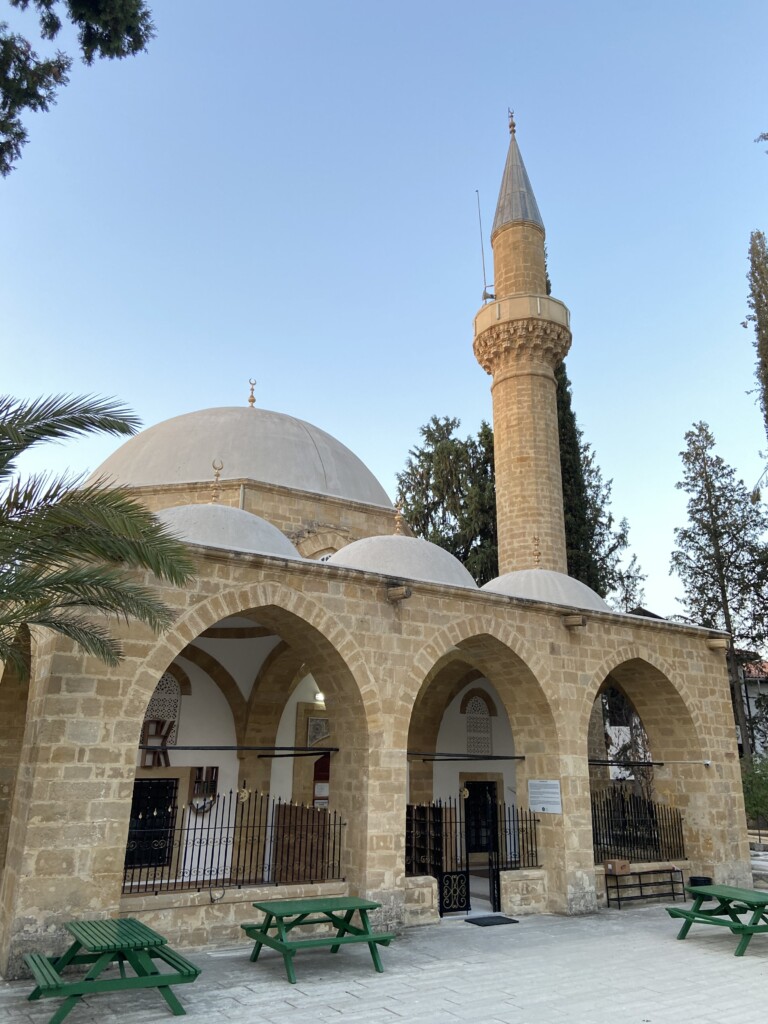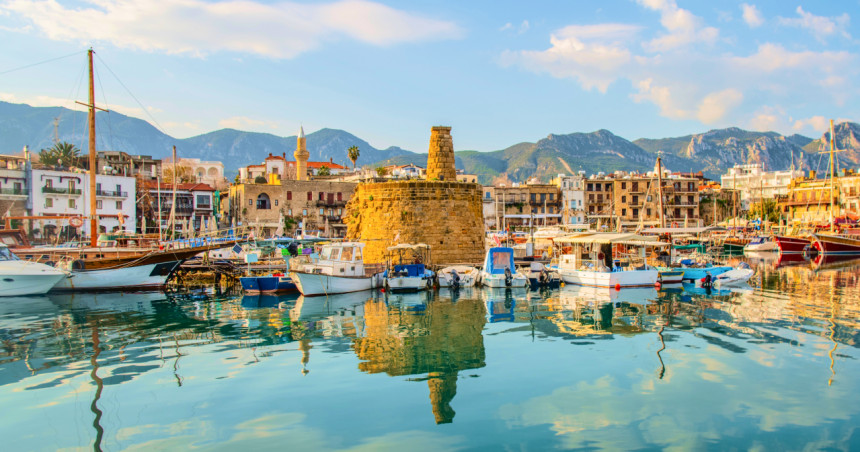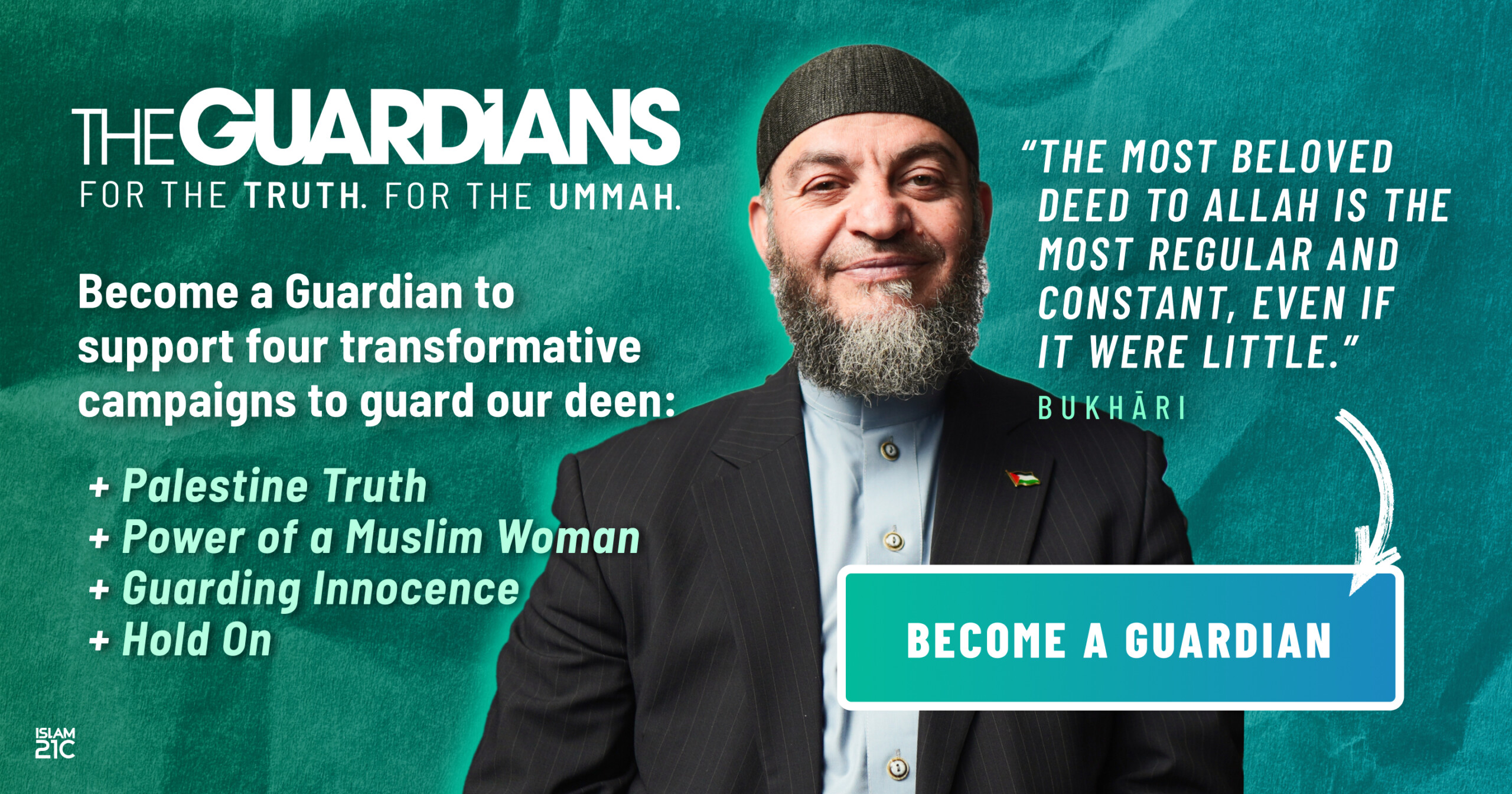In the name of Allah, the Most Gracious, the Most Merciful, all praise is due to Him, and may His peace and blessings be upon His final Messenger, Muhammad.
The history of Islam in Europe is a firm and longstanding one, perhaps most clearly highlighted by the fact that the continent is home to several Muslim-majority countries.
The picture, however, is somewhat skewed by the way in which these countries can be categorised, defined, and grouped into regions. The question of diplomatic recognition also complicates matters; after all, not all of these countries are universally recognised by the international community.
Putting these semantics to one side, there could be as many as seven such countries. Firstly, there are the Eurasian three: Turkey, Azerbaijan, and Kazakhstan, all of whom have a portion of land in Europe, as well as in Asia. The remaining four are located entirely on European soil.
Three of these belong to the Balkans, including Albania, Kosovo, and Bosnia and Herzegovina, but another country sits in a far corner of the Eastern Mediterranean: the Turkish Republic of Northern Cyprus (TRNC). [1]
An introduction to the TRNC
The TRNC was declared in 1983, and marked its 40th anniversary on 15 November last year.
The state covers roughly one third of the island of Cyprus, including its northern-most areas and, according to 2021 statistics, has a population of over 382,000. [2]
As its name suggests, the country’s citizens are largely made up of Turkish Cypriots, a people whose roots on the island stretch back to the Ottoman conquest of Cyprus over 450 years ago.
The TRNC has many historic mosques and Evkaf — a longstanding Islamic institution in Cyprus that was established in 1571 and still maintains Muslim places of worship and burial grounds to this day. [3]
Central government is based in the northern part of Nicosia — a city known in Turkish as Lefkoşa. On the other side of a UN peacekeeper-controlled buffer zone, Lefkoşa’s south is the seat of government for the Greek Cypriot-administered Republic of Cyprus (arguably wrongly referred to as just Cyprus).

1960: The Republic of Cyprus
The roots of the TRNC date back to the independence of Cyprus from British colonial rule in 1960. Initially, the entire island was a single country, the Republic of Cyprus. It was established by a series of treaties.
One of these, signed on 16 August of that year, named three guarantor states: Turkey, Greece, and the United Kingdom. [4]
This treaty was intended to preserve the RoC’s security, territorial integrity, and the status quo, as well as prevent members of either community seeking to unite with other countries.
Clearly bi-communal post-independence
From the outset, the RoC constitution and affairs of state were explicitly bi-communal — with a power sharing agreement between both Greek and Turkish Cypriots.
This was reflected, for instance, in its presidency, with the Greek Orthodox Archbishop Makarios as its first President, and the Turkish Cypriot Dr. Fazıl Küçük as its Vice President.
Each side also had the right of veto, a quota of cabinet seats, and the right to manage their own religious, education, and sporting affairs directly.
Enosis (Union)
However, since early on, the Greek Cypriot Orthodox Church and other groups had already been planning to bring Cyprus into “Enosis”. That is to say, a full union with Greece.
President Makarios went so far as to swear an oath that he would achieve this goal upon becoming an archbishop in 1950. [5] And that same year, he oversaw an unofficial referendum with support from the church in Athens.
The plebiscite, in which Greek Cypriots were the only participants, saw a 95 per cent vote in favour of Enosis. [6]
Kanlı Noel (Bloody Christmas)
After the signing of the 1960 treaties, it did not take long for the situation to deteriorate into inter-communal violence.
A conflict erupted in late December 1963, during which supporters of Enosis massacred and expelled large numbers of Turkish Cypriots from their homes in events known as Kanlı Noel or the “Bloody Christmas”.
The conflict was the result of the Akritas Plan, that was overseen by Makarios and viewed by Turkish Cypriots as a “blueprint for genocide”. The scheme involved mounting a coup against the existing constitutional system through a paramilitary group called EOKA and, in doing so, subjugating Turkish Cypriots by forcing them to accept minority status. [7]
The Akritas Plan also included details about encouraging the community to leave the island and, where required, killing Turkish Cypriots to create the necessary climate of fear and stifle opposition to Greek Cypriot rule.
A miserable decade ahead
The tragedy saw many Turkish Cypriots and, in some cases, whole villages flee to tiny enclaves that represented just three per cent of the island’s territory.
In 1964, as many as a quarter of the entire community are believed to have been displaced.
These enclaves were initially governed mainly by Turkish Cypriot former RoC officials, headed by Dr. Fazıl Küçük and his deputy Rauf Denktaş, who would later go on to be the TRNC’s first President.
Unfortunately, the next ten years were terrible for Turkish Cypriots.
İpek Özerim, a British Turkish Cypriot journalist well acquainted with these events, told Islam21c about the community’s experience,
“Turkish Cypriots lived under brutal conditions for a decade.
“Everyday items from baby milk to cement were banned by the Greek Cypriot authorities, and movement across the island was restricted. Turkish Cypriots were subject to all manner of humiliating stops and searches, and their property was seized.
“People were killed with impunity, and some went missing, never to be seen again. This was all aided and abetted by the Greek Cypriot-controlled Republic of Cyprus.”
1974: Turkey launches Cyprus Peace Operation
Makarios out, Sampson in
This year saw a seismic event in this story.
A more militant pro-Enosis group known as EOKA-B carried out an Athens-backed coup that toppled RoC President Makarios, replacing him with hardline Greek Cypriot nationalist Nikos Sampson.
Known as “the executioner of Murder Mile” for his role in the killing of numerous British servicemen and civilians in the 1950s, and accused of multiple atrocities against Turkish Cypriots in 1963-4, Sampson’s coming to power was naturally an existential concern for the already beleaguered community. [8]
Guarantor states’ right to take unilateral action
Importantly, the fourth article of the RoC’s Treaty of Guarantee gave the guarantor states the right to intervene in Cyprus to restore constitutional order, if either community violated the agreement’s provisions.
This included taking unilateral action if the guarantors were unable to agree a joint approach.
Turkey had already intervened once before, a decade earlier in 1964, providing aerial support that saved Turkish Cypriots in the vital port village of Erenköy from heavy shelling by Greek Cypriot forces. [9]
This time, however, after London refused to conduct a joint operation, the Turkish government — led by coalition partners Prime Minister Bülent Ecevit, and Deputy Prime Minister Necmettin Erbakan — launched the Cyprus Peace Operation to safeguard Turkish Cypriots from genocide.
Turkish military presence provides stability
The military operation took place in two stages, and ended with the Turkish Armed Forces taking control of some 37 per cent of Cyprus’ total territory. [10]
Turkey’s military presence remains on the island to this day, and is still greatly valued by many Turkish Cypriots as a security guarantee.
Turkish Cypriot fears were unquestionably valid; in fact, Nikos Sampson would later tell a Greek newspaper that if not for Ankara’s intervention, he would have “annihilated” the community on the island. [11]
One island, two states?
Turkish Cypriots forced to secede
The post-intervention situation ultimately led to a permanent partition of Cyprus into two ethnic zones, a Turkish North and a Greek South, bolstered by a voluntary population exchange agreement in 1975 that allowed members of both communities to re-settle with their compatriots on either the Greek or Turkish-majority sides.
Shortly before the agreement, the Turkish Cypriots had reorganised their administration into a federated state, and sought to re-establish the RoC as a federal country.
However, the Greek Cypriot leadership, still in control of the republic, its remaining territory, and institutions, refused to accept this, and lay claim to the entire island.
By late 1983, the United Nations had offered no fewer than six reunification plans, all of which were rejected by the Greek Cypriot authorities, ultimately prompting the Turkish Cypriots to formally secede from the RoC and declare the TRNC on 15 November that year.

Developing partnerships with Muslim countries
Today, the TRNC only has formal diplomatic relations with Turkey.
The republic was briefly recognised in 1983 by both Pakistan and Bangladesh, but the South Asian nations retracted their recognition under international pressure, specifically stemming from the US and UK.
More recently, the TRNC’s current President Ersin Tatar has held high profile meetings with the leaders of several other Muslim-majority countries.
- In 2022, President Tatar met with the Vice President of The Gambia, Badara Alieu Joof, in North Nicosia. [12]
- Becoming the first Turkish Cypriot leader to formally meet with an Azerbaijani head of state, Tatar travelled to Baku in October 2023 to visit President Ilham Aliyev. [13]
- Most recently, in December 2023 the Turkish Cypriot leader met with Sadyr Japarov, President of Kyrgyzstan, in Bishkek. [14]
The TRNC also sits as an Observer Member in key international bodies, including the Organisation of Islamic Cooperation (joined in 1979 under the name “Turkish Cypriot State”) and the Organization of Turkic States (joined in 2022). [15] [16]
Tatar has backing of Turkish President Erdoğan
As for Ersin Tatar, the President came to power in 2020 with a mandate to push for the international recognition of the TRNC as part of a lasting two-state solution to the long-running Cyprus dispute.
He has the firm backing of Turkey’s President Recep Tayyip Erdoğan and Ankara, which have both been instrumental in opening diplomatic doors for Tatar.
Despite resistance from Greek Cypriots and the international community, the UK-educated TRNC President has pursued his two-state policy, pointing to 11 unsuccessful international attempts to re-integrate the two sides since the conflict broke out in 1963, with the most recent effort failing in 2017.
The current status quo marks a longstanding inability of the international community to grasp the nettle about the root causes of the Cyprus conflict and what is preventing a just settlement.
EU broke its own rules by admitting RoC into union
In 2004, simultaneous referendums were held on both sides of the island on a UN plan that would have united the Greek and Turkish Cypriot administrations as a single bi-zonal, bi-communal federal country.
Two thirds of Turkish Cypriots voted in favour of the plan, while 76 per cent of Greek Cypriot voters rejected it.
Bizarrely, it was the rejectionist side who were rewarded, as a week after the referendum the Greek Cypriot-controlled Republic of Cyprus was admitted into the European Union as the sole “legitimate” government of the entire island, despite breaching the EU’s own rules by accepting a divided territory with unresolved political problems as a member state.
World ignoring TRNC while embracing RoC
Unfortunately for the Turkish Cypriots, they and their state were left out in the cold after the disastrous EU action.
And a plethora of promises made by global leaders to end their international isolation have never been fulfilled.
Worse still, both Greece and the Greek Cypriot administration have since weaponised their EU status by vetoing moves that would accommodate Turkish Cypriot rights, such as direct trade between the bloc and the embargoed TRNC. [17]
It appears that while the world treats one side as a state and the other as a mere community, there can be no breakthrough in the political deadlock in Cyprus. In this context, it should come as no surprise that President Tatar has reaffirmed his call for “two equal, sovereign states” to be recognised ahead of any new UN-brokered negotiations commencing. [18]
May Allah grant a just resolution for all the people of that beautiful island.
Action points
-
Keep the TRNC and Turkish Cypriot people in your du’ā while learning more about their culture and heritage.
-
Visit the TRNC and support Turkish Cypriot businesses with your tourism! They are a vital part of our Ummah.
-
Write to your MP and urge them to support Turkish Cypriot rights, and to campaign for the same status given to the Greek Cypriot state.
Source: Islam21c
Notes
[1] According to 2013 CIA World Factbook figures, 50.7 per cent of Bosnia and Herzegovina’s population is Muslim.
[2] https://mfa.gov.ct.tr/wp-content/uploads/2023/07/brosuren.pdf
[3] Translated from Awqaf (i.e. foundation) in Arabic.
[5] https://youngturkishcypriots.org/nmew-community-enter-to-open/
[6] https://www.ekathimerini.com/news/216412/cyprus-reunification-stalled-in-row-over-1950-vote/
[7] http://www.cypnet.co.uk/ncyprus/history/republic/akritas.html
[8] https://www.nytimes.com/2001/05/11/world/nikos-sampson-66-cyprus-president-after-coup-dies.html
[9] https://www.t-vine.com/55-years-on-remembering-cengiz-topel-and-the-erenkoy-resistance
[10] https://www.t-vine.com/why-the-second-phase-of-turkeys-peace-operation-in-cyprus-was-necessary
[11] https://publications.parliament.uk/pa/cm200405/cmselect/cmfaff/113/113we51.htm#n172
[14] https://kktcb.org/en/president-ersin-tatar-meets-with-president-of-kyrgyzstan-sadyr-japarov-11779
[15] https://www.oic-oci.org/page/?p_id=179&p_ref=60&lan=en
[16] https://www.turkicstates.org/en/turk-konseyi-hakkinda
[17] https://www.unav.edu/en/web/global-affairs/eu-nato-cooperation-on-the-cyprus-conflict
[18] https://in-cyprus.philenews.com/local/ersin-tatar-reaffirms-demand-for-two-equal-sovereign-states/








May Allah protect All Muslim